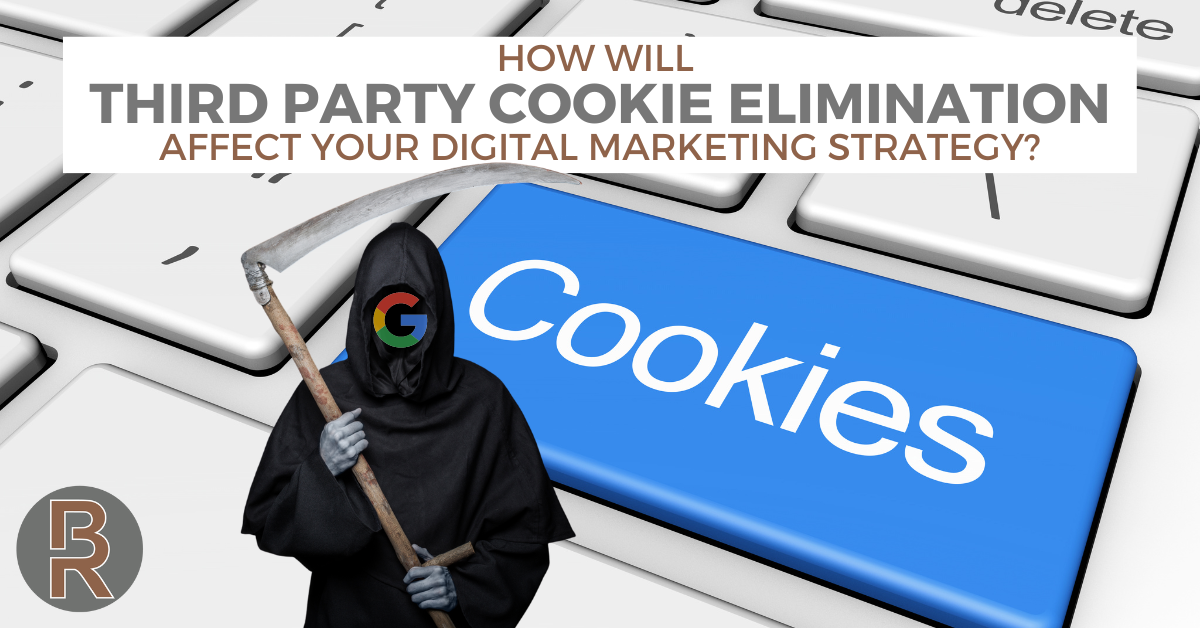Cookies follow us throughout our time spent on the internet. They track every movement, every behavior, and it’s just plain scary sometimes. Have you ever been online looking at a t-shirt to buy and then navigated to another website only to find an ad for that same shirt? That’s the work of a 3rd party cookie.
By definition, a 3rd party cookie is a piece of code embedded into a users’ web browser that tracks their every move online. It tracks what is viewed, what is placed in shopping carts, purchases, and even non-purchases. However, 3rd party cookies don’t just track behaviors on one website, but rather they track behavior throughout the entire users’ internet experience.
Since 2014, Safari has restricted 3rd party cookies as well as Firefox following in 2019. These two web browsers combine for about 40% of all internet traffic in the US! Safari also accounts for over half of mobile internet traffic. This consists of millions of internet users that advertisers are not able to collect behavior data on, an advantage digital marketers have over traditional advertising methods such as television and radio. In an effort to further protect user privacy, Google announced that it will begin to phase out 3rd party cookies on their Chrome browser with a target completion date sometime in 2022.
So, what does this mean for the future of digital marketing?
The ability to adapt to new targeting methods will be the key to future success in the digital marketing realm. If you work in the digital industry, then chances are that you are already familiar with adapting to changes in the marketing landscape. It seems as though advertising policies change daily and keeping track of all the changes can be a daunting thought considering there are so many different digital platforms to manage.
Moving forward, the data someone is able to collect first-hand (through 1st party cookies) is likely to increasingly become more vital than it already is. One method of 1st party cookie data collection is actually a Google product: Analytics. There are all sorts of user datapoints that you can collect to see how they interact with your website. This data can be combined in Analytics to create custom marketing lists that can be linked to and used by Google Ads to reach a specific audience. Since this data is collected directly from your website and not based off of user behavior across the internet, it is NOT considered 3rd party.
Another example of 1st party data collection is gathering customer data through newsletter sign ups, email lists, and past customer data. Not only is this beneficial for email marketing campaigns, but the data can also be used to create “lookalike” audiences which will target users based on the overall general profile similar to the demographics of the people included in the list. Instead of targeting people based on their personal internet history (3rd party cookies) you can target them based on whether or not they “look like” your current customer profile.
Social media platforms, such as Facebook, have revolutionized user data and how it can be used to target a specific audience. Millions of users freely provided their personal information, interests, and habits directly to Facebook which then can provide advertisers with enhanced targeting methods that they can use freely as long as the user is logged into Facebook. Google has similar targeting methods, but the user needs to be logged into their Google account in order for it to be fully effective and not everyone that uses the internet is logged into a Google account.
There are likely other methods for digital ad targeting not yet invented. The digital advertising landscape is likely to continue to change and adapt just as the policies that govern them. If you think your advertising efforts could be better targeted, our experts and Brand Ranch Media want to speak with you! Please feel free to give us a call at 713-309-6380 or reach out through our online contact form.

